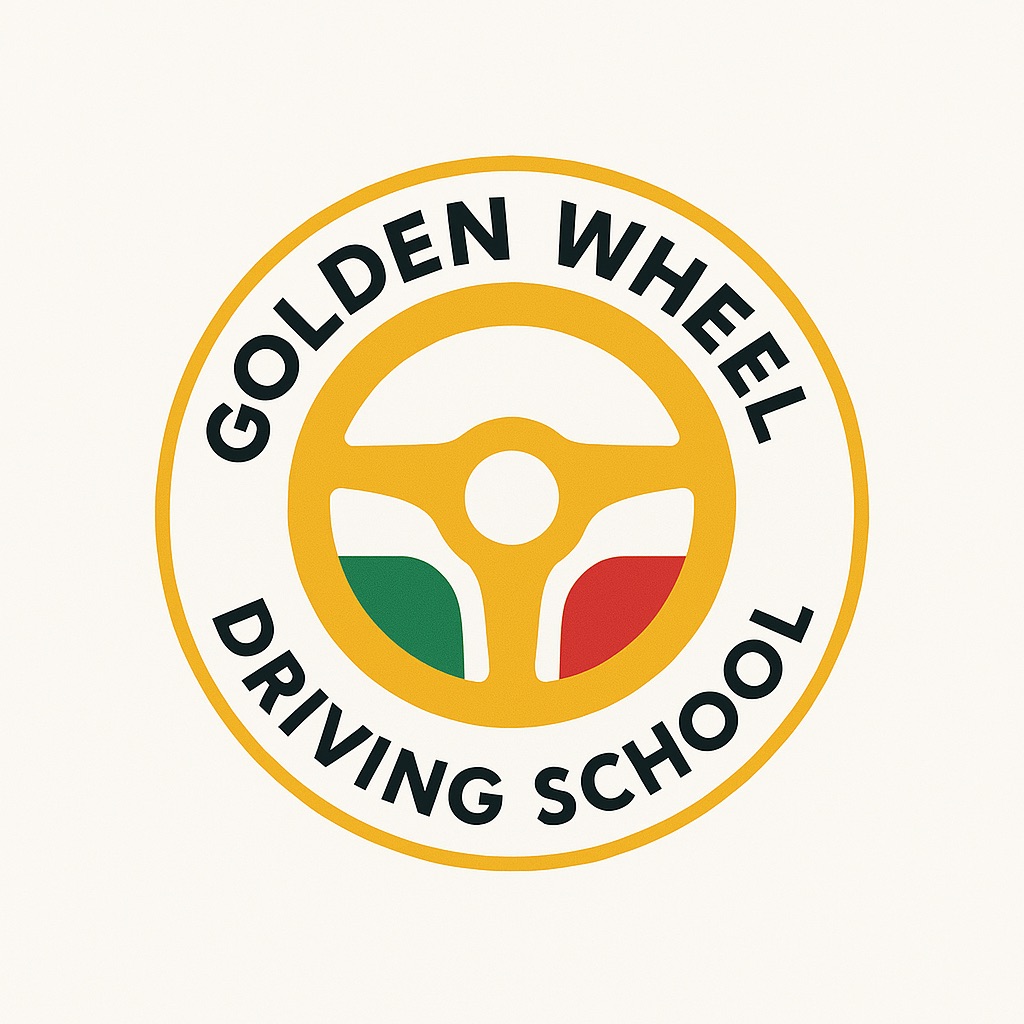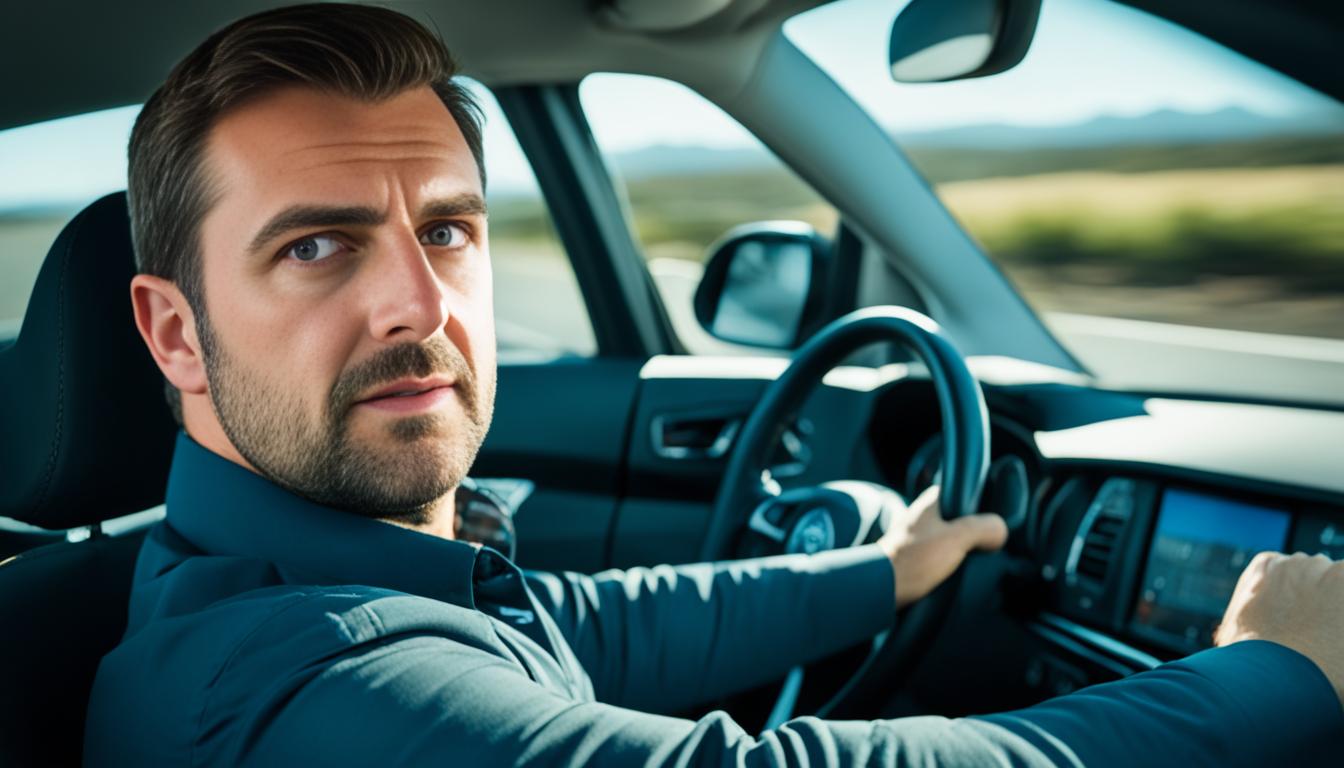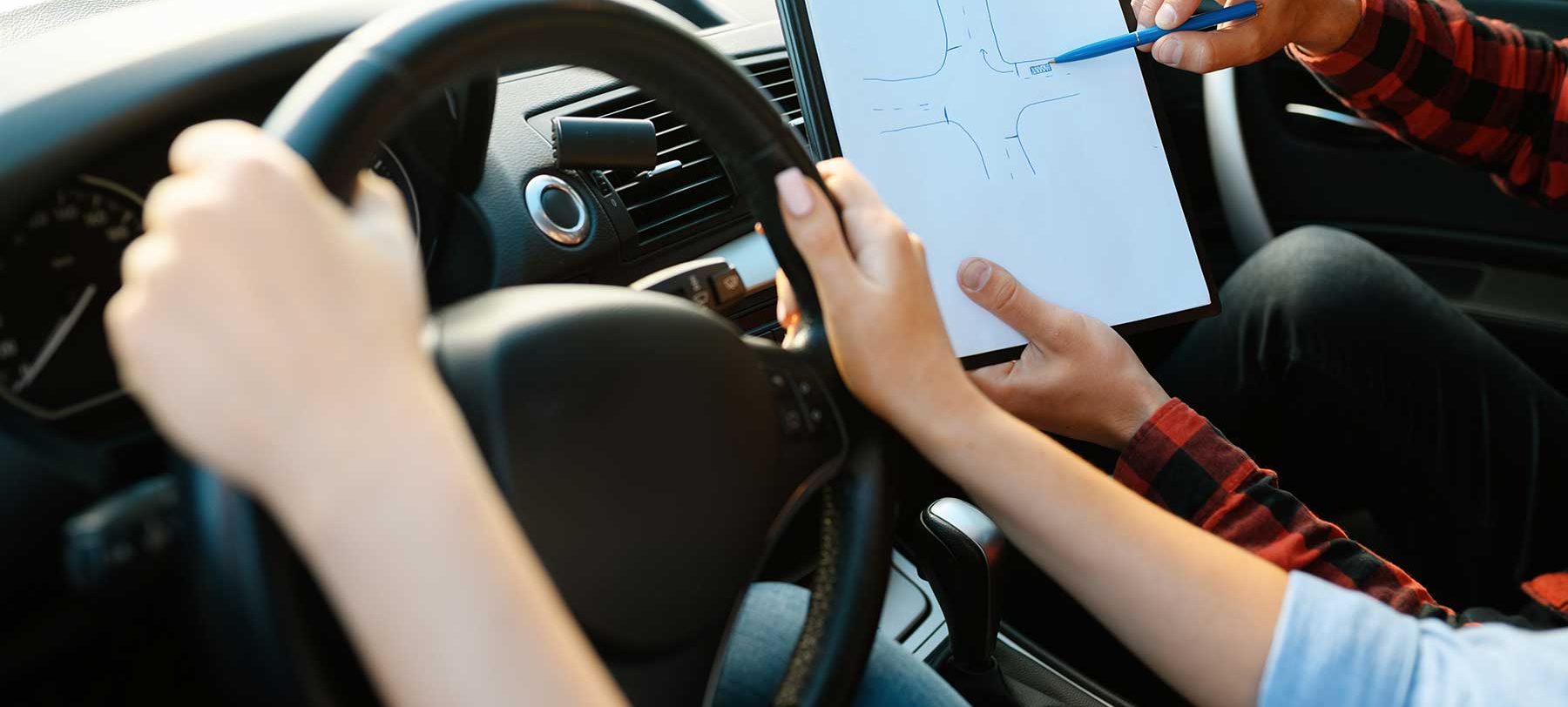Starting to drive is like beginning a great journey. However, not every path is easy. When you’re new to driving, you’ll face challenges and might make mistakes. But knowing these common blunders can make your ride much smoother. From not paying attention to stop signs to getting distracted, we’ll guide you on avoiding the top 10 mistakes. So, let’s get ready to drive with confidence and safely. Just remember to buckle up as we navigate this together.
Key Takeaways:
- New drivers are prone to making mistakes, but being aware of common pitfalls can improve their safety.
- Proper signaling is crucial to communicate your intentions and avoid confusion on the road.
- Speeding and tailgating can be dangerous habits that put you and others at risk.
- Avoid distractions, such as using electronic devices, to stay focused on driving.
- Check blind spots before changing lanes or making turns to prevent accidents.
Failing to Signal Properly
For new drivers, forgetting to use turn signals is very common. Not signaling in advance can cause confusion and accidents. It’s crucial for new drivers to learn how important signaling is for safety.
When you don’t signal, others can’t predict your next move. This raises the risk of accidents. Signaling tells others you’re planning to turn or switch lanes.
The Importance of Signaling
Signaling is key in defensive driving. It helps you give clear signs to others. This makes the road safer. It also avoids misunderstandings and conflicts, making traffic flow better.
Failure to signal is a big mistake. But, it’s one you can avoid. By using your signals right, you help cut accidents. This makes the roads safer for everyone.
Tips for Using Your Turn Signals Effectively
Here are tips to make your signals work well:
- Signal in advance: Always signal at least 100 feet early before you turn or change lanes. This gives time to drivers behind you to slow down.
- Signal continuously: Keep your signals on until the maneuver is done. Don’t turn them off too soon, or it could confuse others.
- Be mindful of other road users: Always signal, even if you don’t see other cars. Pedestrians and cyclists watch for signals to know what you’re doing.
- Check your signal lights: Make sure your lights work by checking them often. Change any bulbs that are not lighting up.
Using turn signals is not just a rule; it’s about driving safely. By signaling correctly, you help create a better, safer road for everyone.
Speeding and Tailgating
Speeding and tailgating are common mistakes among new drivers. These errors can be very dangerous. They put the driver and others at risk. Let’s explore why these actions are bad and how to drive more safely.
Driving too fast makes it hard to react to sudden traffic changes. It also reduces the control you have over your car. This can lead to problems like not being able to turn well or avoid hitting something.
To avoid speeding:
- Keep an eye on the signs for the speed limit.
- Match your speed to the road, the weather, and how busy it is.
- Make sure you leave early enough so you don’t have to rush.
- On highways, use cruise control to stay at a steady speed.
Tailgating involves driving too close to the car ahead. This habit is also a risk. It leaves you little room to stop if the car in front suddenly brakes. You might end up in a rear-end collision.
To avoid tailgating:
- Keep at least three seconds between you and the car ahead.
- Follow the “two-second rule” by passing a fixed point two seconds after the car in front does.
- Change your distance as needed, like if it’s slippery or you’re driving fast.
Driving safely is crucial for everyone on the road. By not speeding and not tailgating, you make the road safer. This way, accidents are less likely to happen.
“As a new driver, it’s crucial to prioritize safety on the road by avoiding speeding and tailgating.”
Distracted Driving
The use of smartphones and other devices has made distracted driving a big issue. Using these while driving can be really dangerous. It’s important for new drivers to learn about these risks. They should focus on the road and drive safely.
Distracted driving means doing things that take your eyes off the road. This includes texting, calling, eating, and using tech in the car. In 2018, distracted driving led to 2,841 deaths, according to the NHTSA. This shows how vital it is to avoid distractions and keep everyone safe while driving.
It’s crucial for drivers to form good habits that reduce distractions. They should keep their phones away and use a hands-free mount if needed. Doing this will help fight the urge of using their phones while driving.
Using a phone while driving is dangerous and often against the law. Getting caught can lead to fines and bad marks on your driving record. Following these rules will help new drivers build good habits from the beginning of their driving career.
It’s important to have self-control to avoid distracted driving. Drivers should not respond to texts or calls while driving, even if they’re urgent. Remembering the potential dangers and keeping safety first can stop distractions from taking their attention off the road.
“A quick glance at your phone is all it takes to change lives forever. Don’t let distractions derail your attention from the task at hand: safe driving.”
Aside from phone use, things like eating or reaching for items can also be dangerous. Make sure all you need is within reach before starting to drive. If something falls out of reach, wait for a safe time to pull over and get it.
Having a defensive driving mindset is also key. This means always looking out for potential dangers and keeping a good distance from others on the road. Being alert to your surroundings and watching how others drive can help spot dangers early. This can help react quickly to prevent accidents from distractions.
Key Tips to Avoid Distracted Driving:
- Keep your phone out of reach or use hands-free devices if necessary.
- Be familiar with and follow local laws regarding phone usage while driving.
- Do not engage in activities such as eating or grooming while driving.
- Create a safe environment inside the vehicle by securing loose items and organizing belongings before driving.
- Maintain a defensive mindset, always scanning the road and anticipating potential hazards.
Being focused and driving attentively can help new drivers stay safe. This ensures everyone has a safer experience on the road.
Failure to Check Blind Spots
Checking blind spots is vital for all drivers, especially new ones. This step is often forgotten but is very important. It can lead to serious accidents. To drive safely, we must check our blind spots every time we move our car.
Why Checking Blind Spots is Vital
We check our blind spots to see what our mirrors don’t show. If we don’t, we might hit other cars when we change lanes. We could also hurt people walking or biking when we turn. Watching out for these hidden areas prevents many accidents and keeps everyone safe.
Guidance for Checking Blind Spots
Here are some tips to check your blind spots well:
- Adjust your mirrors so you see less of your car and more of the road around you.
- Use the shoulder check: look over your shoulder before moving your car. This way, you can make sure no one is hiding in your blind spot.
- Remember, different vehicles have different blind spots. Big vehicles, like trucks or SUVs, have larger blind spots, mainly on the right. Always be extra careful around people on bikes or motorcycles. They can easily be missed in your blind spots.
By following these simple steps, you can reduce the chance of accidents. Being aware of the space around your car is key to driving safely.
Next, we will look at another mistake new drivers often make: parking incorrectly.
| Problems Caused by Failure to Check Blind Spots | Tips to Avoid Blind Spot Mishaps |
|---|---|
| 1. Lane change collisions 2. Accidents while turning 3. Endangering pedestrians and cyclists |
1. Adjust mirrors 2. Use shoulder check technique 3. Be mindful of vehicle blind spots |
Improper Parking Techniques
Learning to park right is tough for new drivers. It includes parallel, angle, or backing parking. Bad parking can lead to frustration or even crashes. I’ll give some tips to make new drivers better at it.
Parallel parking: It’s often hard for new drivers. Look for a longer spot than your car to practice. Here’s how to parallel park:
- Get next to the car before the open spot, leaving two feet between.
- Check mirrors and blind spots for traffic.
- Turn right and slowly back up, watching through the rear.
- When your back end lines up with the front car, turn totally left.
- Keep going back, straightening your wheel to get close to the curb. Leave space between cars.
- Straighten your wheels to finish, adjusting if needed.
Practice parallel parking in a quiet area. This could be a quiet street or an empty parking lot. Don’t rush it.
Angle parking: You often find this in parking lots. For angle parking, do this:
- See how the space angles compared to the road.
- Go to the space’s closest side carefully and leave enough room to turn.
- Tell others you’re parking and check for traffic and people.
- As you enter, turn your wheel toward that space smoothly.
- Keep going until you fit in the space. Adjust if needed.
- Make space for cars next to you to move safely.
Backing into a parking spot: This skill makes leaving easier. Follow these steps to back park:
- Choose a spot where you can back in without trouble.
- Start next to the spot with enough space to move.
- Let others know you’re parking and check for traffic.
- Start to reverse slowly and watch around you.
- Turn your wheel the other way of the parking, placing your car in the spot.
- Keep adjusting until you’re in the spot properly.
- Ensure there’s room to open your doors safely.
Practice these skills in various places to get better. You’ll get used to it over time.
“Parking correctly keeps your car and others safe and traffic flowing smoothly.”
Follow these tips to get better at parking. It takes time, but you’ll improve. Practice a lot and ask for advice from experienced drivers. Soon, parking will be easy for you.
Ignoring Traffic Rules and Signs
Many new drivers make the mistake of ignoring traffic rules and signs. This can lead to accidents or hefty fines. It’s vital to know and follow these rules for your safety and that of others.
To drive safely, you must understand the main traffic rules in your area. These cover speed, right of way, and how to use lanes. Following these rules lessens the chance of accidents and keeps traffic moving smoothly.
Traffic signs are essential for safe driving. They give directions, warnings, and information about the road. Understanding these signs is key to having a safe trip.
Here are a few helpful tips for managing traffic rules and signs:
- Study the driver’s manual: Always read your state’s driver’s manual before you start driving. It details the traffic rules and signs you need to know.
- Take note of common signs: Make sure you know common road signs, like stop and yield signs. Understanding these signs helps you drive safely.
- Be cautious at intersections: Be careful at intersections. Follow the lights and signs, and watch for other cars.
- Stay aware of changing road conditions: Construction or detour signs are important. They tell you about road changes. Always follow these signs to stay safe.
Disregarding traffic rules and signs can lead to serious problems. Learn and follow these rules to be a safe driver. It may seem like a small effort, but it’s crucial for your safety on the road.
Failure to Yield Right of Way
Not giving others the right of way can lead to severe problems. When I first started driving, I found it hard to know when to yield. In this part, I’ll give you some important tips to avoid this mistake and keep everyone safe.
Understanding Right of Way
First off, let’s explain what right of way means. It’s the right to go first in traffic. Knowing this is vital because it tells you when you should wait or go at an intersection or when lanes merge.
At spots like intersections or crosswalks, knowing who goes first is key. Failure to yield here can cause accidents. Let’s see some cases where you must yield:
- Yielding to pedestrians at crosswalks
- Yielding to oncoming traffic when making a left turn
- Yielding to emergency vehicles with lights and sirens
- Yielding to cyclists when they have the right of way
By following these simple rules and yielding when you’re supposed to, driving becomes safer for everyone.
Tips for Yielding Right of Way
Knowing the importance of yielding, here are some tips to help you handle these situations with ease:
- Be aware of traffic signs: Look out for yield signs or other signals that tell you to give way. They’re your cue to know when it’s your turn to let others pass.
- Anticipate potential yield situations: Always be thinking ahead at intersections or merging lanes. Try to predict when you’ll need to yield. It helps you to be ready and make the right moves in time.
- Communicate your intentions: Use your turn signals to show that you plan to yield. This lets others know you’re aware of who should go first.
- Practice patience: At times, yielding will mean waiting a moment. It’s important to be calm and wait for the right time to go safely.
- Stay vigilant: Even if you don’t need to yield, keep an eye out for others who might not follow the rules. Being cautious helps avoid accidents.
Remember, yielding is a sign of respect and shows you’re a safe driver. It’s not about giving in; it’s about putting safety first.
| Situation | When to Yield |
|---|---|
| Pedestrians at crosswalks | Always yield to pedestrians in a crosswalk. Stop and let them cross safely. |
| Making a left turn | Yield to oncoming traffic before making a left turn. Wait for a safe gap before proceeding. |
| Emergency vehicles | Pull over to the side and yield to emergency vehicles with lights and sirens. |
| Cyclists with right of way | Yield to cyclists when they have the right of way, such as when they are in a designated cycling lane. |
Here’s a quote by Mario Andretti that sums up the need for caution on the road:
“If everything seems under control, you’re not going fast enough.”
Lack of Defensive Driving Skills
Starting out as a new driver means learning defensive driving skills. These skills help you spot and react to dangers on the road. Without them, you’re at a higher risk for accidents. I’ll discuss the essentials of being a defensive driver and tips for staying safe on the road.
Understanding Defensive Driving
Defensive driving means driving safely by staying alert. The focus is on recognizing possible dangers early and taking action to prevent crashes. With the right mindset, you can lower the chances of being in accidents caused by others or sudden events.
Let’s look at key points of defensive driving:
- Always stay focused on the road.
- Keep a safe distance behind the car in front of you.
- Watch out for hazards like people, bikes, and road debris.
- Check your mirrors to see other vehicles around you.
- Expect that anything could happen and be ready to act fast.
Practical Tips for Defensive Driving
Knowing the core of defensive driving, here are some tips to become better at it:
- Scan the road ahead: Look ahead to see what’s coming. This helps you prepare for any changes on the road.
- Use your mirrors effectively: Keep checking your mirrors to know what’s happening around your car. This helps you make smarter driving decisions.
- Anticipate the actions of other drivers: Watching other drivers can hint at their next moves. It lets you adjust your driving to stay safe.
- Keep a safe following distance: Leave enough space from the car in front. This gives you time to stop safely if they suddenly slow down.
- Minimize distractions: Don’t let your attention wander. Stay focused on driving so you can spot and avoid danger quickly.
Following these tips will boost your safety skills while driving.
Remember, defensive driving is key to saving lives, not just yours but others’ too. Mastering these skills will keep you and everyone around you safer on the road.
The Importance of Driver Training
Feeling unsure about your defensive driving abilities? Sign up for a driver training program. These classes offer detailed lessons on safe driving and give you practice in real traffic. Learning from experts will make you a more confident and capable driver.
Also, finishing a driver’s course might lower your insurance costs. Insurers value the extra training you get, seeing you as less likely to have accidents.
| Benefits of Driver Training | Driver Training Programs |
|---|---|
| 1. Improved driving skills | 1. Online and |
| 2. More confidence while driving | 2. In-person classes |
| 3. Cheaper insurance | 3. Training with simulators |
| 4. Advanced defensive driving knowledge | 4. Practical driving lessons |
Getting trained improves how you drive and deals with different road situations.
Conclusion
Understanding common mistakes new drivers make is key to safe driving. New drivers can improve by following advice in this guide. Doing so will make their driving experience safer and more enjoyable.
It all starts with knowing what not to do. New drivers need to watch out for common errors like not signaling, speeding, or getting distracted. Being cautious about these mistakes can help avoid accidents.
Enrolling in a good driving school is a wise move for new drivers. These schools offer thorough training. They ensure new drivers are confident and safe on the roads.
Safe driving is something you keep working at. Keep learning and following good driving practices. This way, you keep yourself, your passengers, and others safe on the road.







